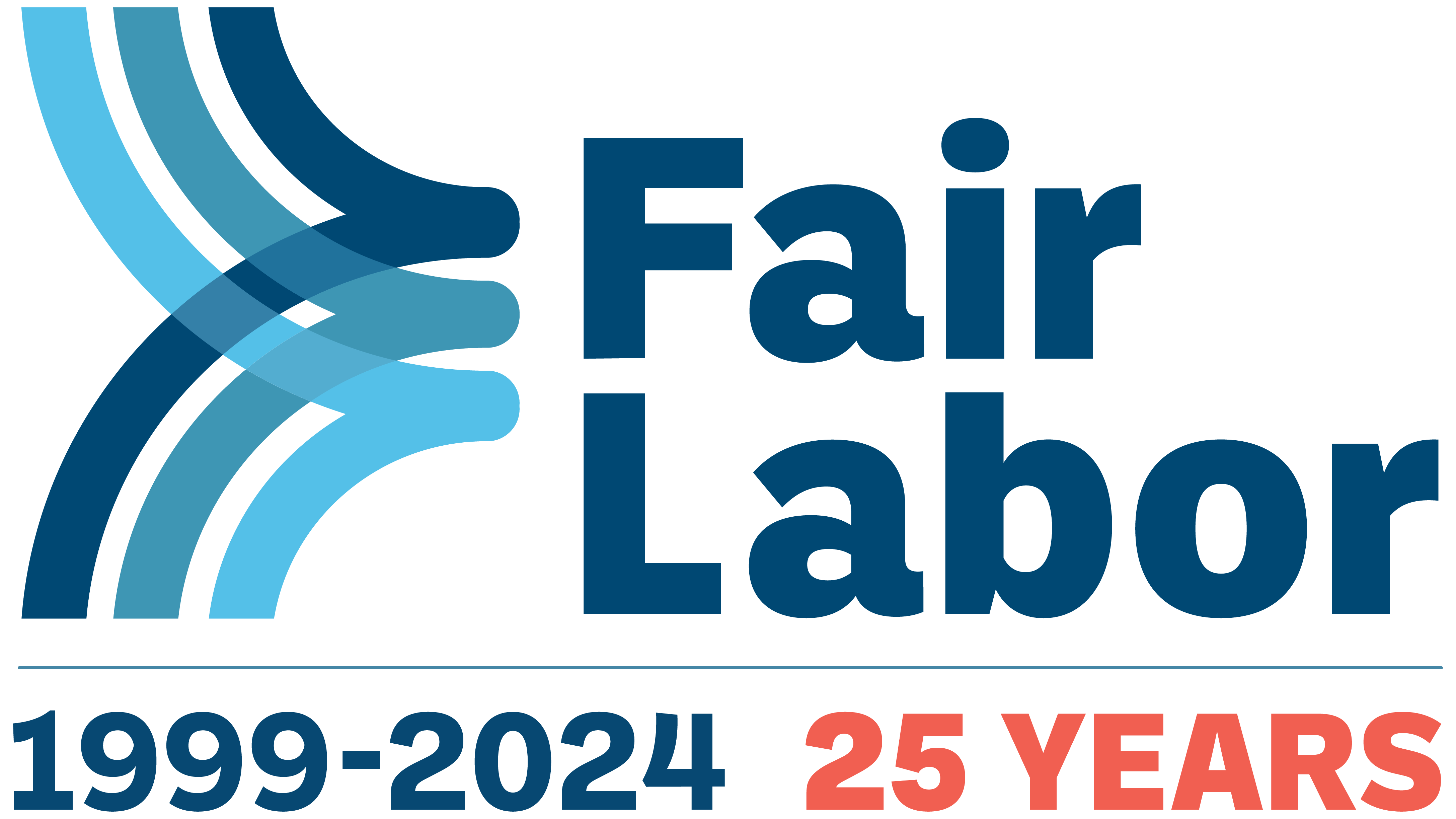Fair Labor Association statement for Congressional-Executive Commission on China roundtable
Remarks as prepared for delivery by Shelly Heald Han, Fair Labor Association, at Global Supply Chains, Forced Labor, and the Xinjiang Uyghur Autonomous Region Roundtable of the Congressional-Executive Commission on China
Thank you for the opportunity to participate in today’s important discussion on supply chains in China. I am pleased to be here. As a matter of organizational policy, we cannot endorse legislation, but we do look forward to reading the bill.
As the world has learned about the human rights abuses happening in Xinjiang against the Uyghurs and other ethnic minorities, the connection to global supply chains, including evidence of forced labor, has become clear. The Fair Labor Association works collaboratively with companies, universities, and civil society organizations to improve labor conditions in global supply chains. Forced labor is not acceptable anywhere in our affiliate’s supply chains.
When a company finds forced labor, it can usually take immediate action to not only stop the abuse but also find ways to effectively remediate the labor violation. A critical aspect of this remediation is direct engagement with the worker. Through engagement with a worker the company gets first-hand information directly from the workers and can tailor remediation based on what is appropriate for that worker in that circumstance. In the context of forced labor in Xinjiang or in other provinces, Uyghurs are not able to speak up or speak out. That means companies cannot engage with them in the detection or remediation process which raises the risk not only for workers but also for companies.
We have provided guidance to our affiliates over the past year and update it as new information becomes available. In January of this year, we informed companies that due diligence in Xinjiang would not reliably detect—or rule out—forced labor. The shift was based on three key factors:
1. Chinese government restrictions on travel to Xinjiang and heavy surveillance;
2. Workers, suppliers, and auditors may not be able to freely communicate; and
3. Suppliers may not be able to remediate the forced labor.
Last week the FLA directed our affiliates to take three actions: the first is to review their direct and indirect sourcing relationships; the second is to identify alternative sourcing opportunities; and the third is to develop timebound plans to ensure that their sourcing is in line with FLA principles. This directive applies to sourcing from Xinjiang (from raw material to finished goods); to production that may take place in another part of China; as well as production that may take place in a third country such as Vietnam or Cambodia, where the supplier is using raw materials or fabric that may come from Xinjiang.
We all agree that companies cannot be complicit in forced labor. Companies must do their part, and we are working with them on that effort. We also know that this is not an issue that companies alone can fix. It will take the collective action of business, governments, multilateral organizations, civil society, unions, and others to address the broader policies that lead to forced labor.
Because the ultimate responsibility lies with the Chinese government, we’d like to suggest that the CECC consider some specific steps that the U.S. government can take to address this directly with the Chinese government.
First, we believe the U.S. government should actively engage with the European Union and bilaterally with other governments to more effectively engage the Chinese government. Forced labor is not just appearing in the supply chains of U.S. companies. By solely focusing on U.S. supply chains we risk losing the critical mass necessary to effectively address the problem.
Second, the U.S. government should establish a diplomatic channel to address this issue directly with the Chinese government. It could set up a bilateral dialogue on prison labor and forced labor, picking up where the two governments left off some years ago with the 1992 Memorandum of Understanding on prison labor.
Additionally, it’s not clear that the Chinese government and Chinese suppliers fully understand U.S. law on forced labor and why its so-called “poverty alleviation” program is considered forced labor under the Tariff Act. While companies have done what they can to educate their suppliers, there can still be a gap in understanding. The U.S. government should help facilitate education on this legal requirement.
Thank you for the opportunity to participate in today’s discussion. I look forward to your questions.
More FLA News
-
Child Labor+9Fair CompensationFair LaborFair Labor AccreditationForced LaborGender EqualityHealth Safety & EnvironmentHuman Rights Due DiligenceResponsible RecruitmentSupply Chain Transparency
Fair Labor Highlights — December 2024
December 12, 2024 View Fair Labor Highlights — December 2024 -
Child Labor+6Climate ChangeFair CompensationFair LaborForced LaborHuman Rights Due DiligenceResponsible Recruitment
FLA celebrates 25 years of history and progress with new publication
December 10, 2024 View FLA celebrates 25 years of history and progress with new publication -
Human Rights Due Diligence
Launch of the Converged Human Rights and Environmental Due Diligence Assessment Tool
November 22, 2024 View Launch of the Converged Human Rights and Environmental Due Diligence Assessment Tool
